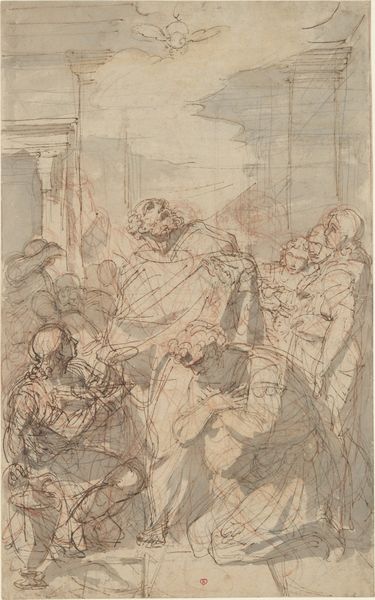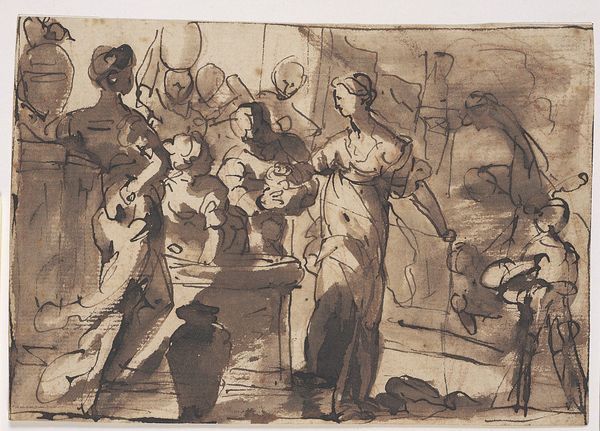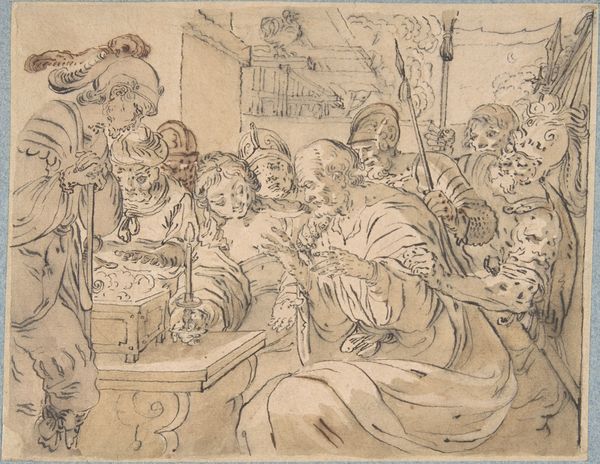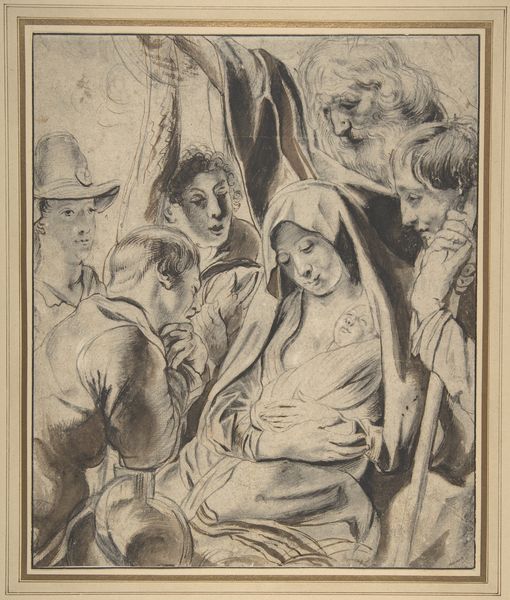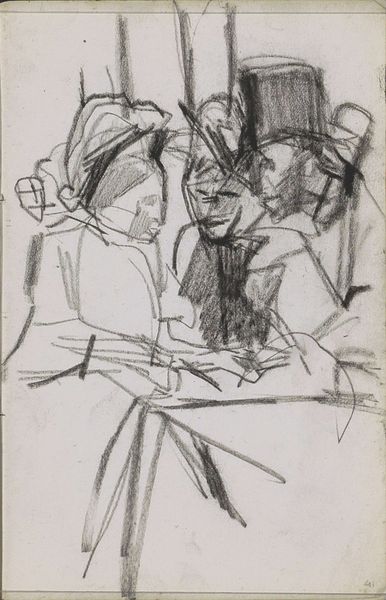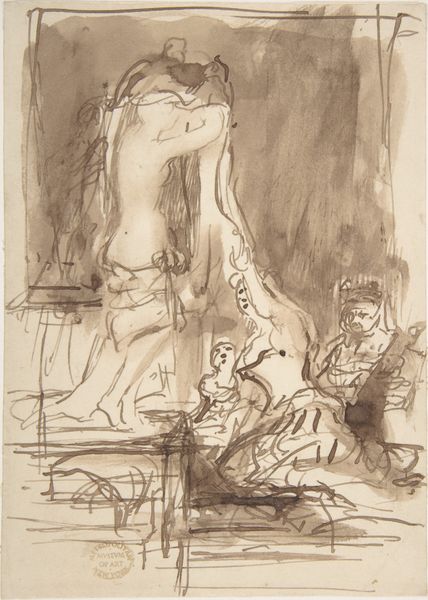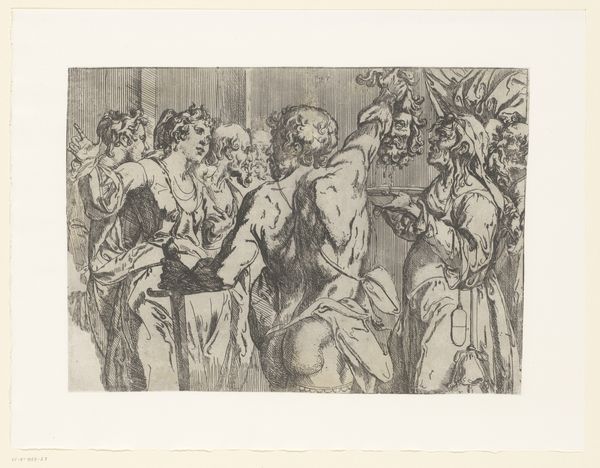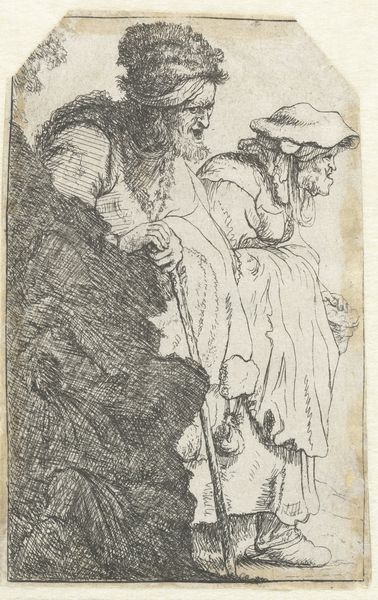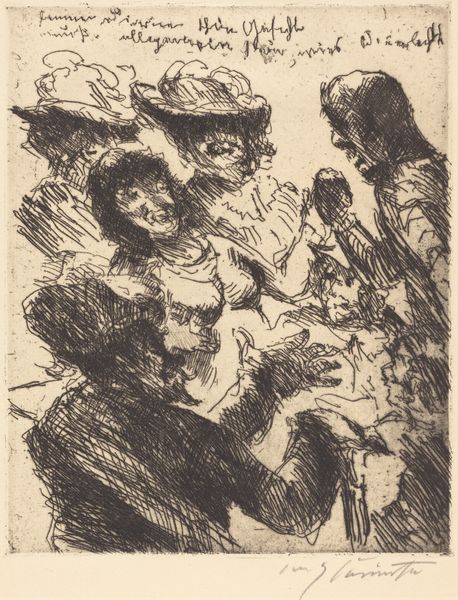
drawing, ink
#
drawing
#
allegory
#
pen sketch
#
pencil sketch
#
classical-realism
#
figuration
#
ink
#
history-painting
Dimensions: sheet: 22.5 x 16.7 cm (8 7/8 x 6 9/16 in.)
Copyright: National Gallery of Art: CC0 1.0
Curator: At first glance, there's a striking urgency to this piece, even in its monochrome state. It looks more like a fever dream sketched on parchment than a polished piece ready for display. Editor: I agree; the use of ink and pen on this drawing certainly gives it that feeling of immediacy. We're looking at what appears to be "Allegory of Justice," by Felice Giani. Curator: "Allegory," that fits; the arrangement seems deliberate. There are multiple figures presented—but it's hard to tell their scale with how loose it is, even with those Roman garments suggesting a sort of historical... theatricality? Editor: The subject of Justice, particularly through allegorical representation, has a long and interesting socio-political history. Justice as a concept is not monolithic, is it? Think of who had access to justice and legal representation at that time; this rendering would have a completely different weight based on who this work would have been intended for. Curator: It's really remarkable how Giani translates weight using seemingly flimsy strokes. The ink and the particular grain of paper seem to interact and come alive, which really drives that point across. Are there known similar works or materials from his era? It would be illuminating to get the full context and consider labor practice too. Editor: While we're not precisely sure of the date or location of this specific artwork's creation, Giani was known for working within a vibrant network of artists and patrons in the late 18th and early 19th centuries. We know how crucial public commissions and private collectors were to him. These are never neutral things; his allegiance influenced how justice might have been seen. Curator: Yes! It would be useful to contextualize its creation alongside other artworks exploring judicial themes in that period, and to consider the politics involved when thinking about its patronage and accessibility. It almost becomes a conversation piece if one dares to engage! Editor: Absolutely, understanding who controlled the dissemination and interpretation of these images then opens up richer discussion now. Curator: In a sense, this brings so much into perspective. Editor: Agreed. Thinking about all these levels really makes this work all the more complex and powerful.
Comments
No comments
Be the first to comment and join the conversation on the ultimate creative platform.
